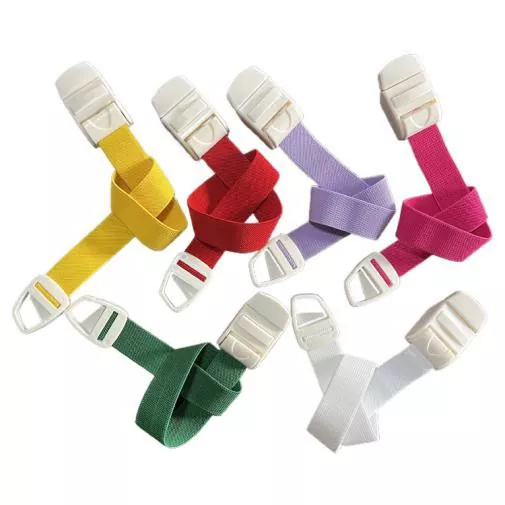What is the Purpose of a Tourniquet?
2024-11-23
In emergency medical situations, certain tools can mean the difference between life and death. One such tool is the tourniquet—a device designed to control severe bleeding by temporarily restricting blood flow. Tourniquets have been used for centuries and remain an essential component of first aid kits, particularly in settings where trauma or injuries are likely. But what exactly is the purpose of a tourniquet, and how does it function in life-saving scenarios? Let’s dive deeper.
Understanding the Tourniquet
A tourniquet is a tightly tied band or device applied to a limb (arm or leg) to compress blood vessels and halt blood flow to a wound. By controlling bleeding from arteries or veins, it prevents excessive blood loss, which can lead to shock or even death. Tourniquets are particularly valuable in situations where other methods, like applying direct pressure or dressing a wound, are insufficient to stop severe hemorrhage.
The Key Purpose of a Tourniquet
The primary purpose of a tourniquet is to control severe bleeding, especially from traumatic injuries. Hemorrhaging is one of the leading causes of preventable deaths in emergency settings, including battlefields, accidents, and natural disasters. A tourniquet provides a quick and effective way to stop blood flow until more advanced medical care is available.
Common Uses of Tourniquets

1. Emergency Situations
Tourniquets are crucial in:
- Trauma Care: For victims of accidents, industrial injuries, or violent incidents involving deep cuts or amputations, a tourniquet can stop life-threatening bleeding.
- Battlefield Medicine: Military personnel rely on tourniquets to stabilize soldiers injured in combat, where arterial bleeding is common.
2. Medical Procedures
In non-emergency medical settings, tourniquets are used for:
- Blood Draws: During phlebotomy, a tourniquet is applied to temporarily restrict blood flow and make veins more prominent for easy access.
- Surgical Operations: Tourniquets are sometimes employed in surgeries, particularly orthopedic procedures, to create a bloodless surgical field for better precision.
3. Training and Drills
First responders, military personnel, and medical professionals practice with tourniquets to prepare for real-life scenarios. Proper application is critical to ensuring effectiveness without causing additional harm.
How a Tourniquet Works
When applied above the site of injury:
1. Compression Stops Blood Flow: A tourniquet compresses arteries and veins, reducing or completely stopping the flow of blood to the wound.
2. Prevents Blood Loss: By halting the outflow of blood, it prevents hypovolemic shock—a life-threatening condition caused by excessive blood loss.
3. Buys Time: A tourniquet provides temporary control, allowing first responders or medical professionals to address the injury and prepare for transport to a medical facility.
Proper Use of a Tourniquet
While highly effective, a tourniquet must be used correctly to avoid complications. Here are the steps for proper use:
1. Placement: Position the tourniquet approximately 2-3 inches above the wound, avoiding joints like elbows or knees.
2. Tightness: Ensure the tourniquet is tight enough to stop the bleeding. You should no longer feel a pulse below the tourniquet.
3. Time Limit: Limit application to under 2 hours, as prolonged use can lead to tissue or nerve damage.
4. Mark Time of Application: Document when the tourniquet was applied to help medical professionals assess the situation.
Benefits of Tourniquet Use
- Prevents Fatal Blood Loss: Tourniquets save lives by quickly stopping excessive bleeding.
- Simple and Portable: Modern tourniquets are lightweight, compact, and easy to use, making them accessible in emergency kits.
- Versatile Applications: They are used in various scenarios, from trauma care to routine medical procedures.
Risks and Considerations
Improper use of a tourniquet can lead to:
- Tissue Damage: Prolonged application can cause tissue ischemia (loss of oxygen to tissues).
- Nerve Injury: Excessive pressure can damage nerves in the limb.
- Complications from Incorrect Placement: Placing a tourniquet too loosely or too close to a joint can worsen bleeding or be ineffective.
These risks underscore the importance of proper training and awareness when using a tourniquet.
Conclusion
A tourniquet is a powerful and essential tool in emergency medicine, capable of saving lives in critical moments. Its ability to control severe bleeding quickly and efficiently makes it indispensable for first responders, military personnel, and anyone trained in first aid. While simple in design, proper application is crucial to maximizing its effectiveness and minimizing risks. Whether on a battlefield, in an accident scene, or during a medical procedure, the purpose of a tourniquet remains the same: to save lives.


